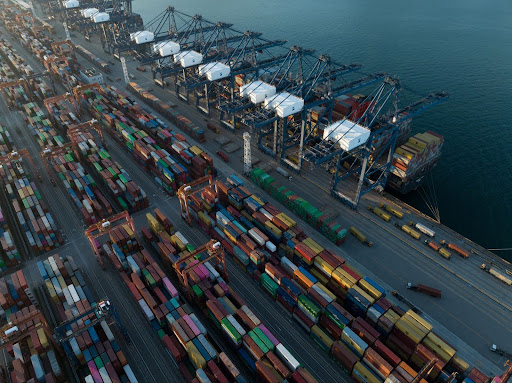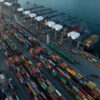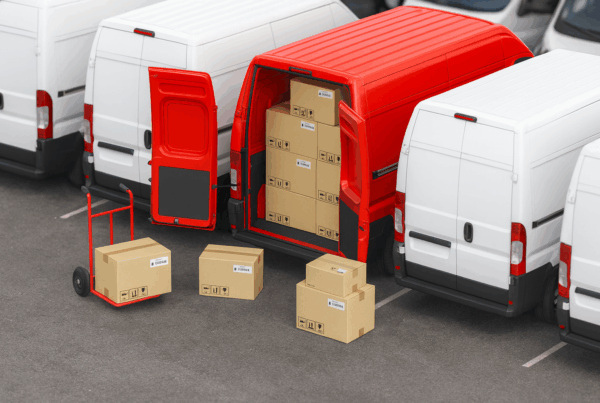Canada’s imports from Asia form a critical component of its trade portfolio. In 2024, Canada’s total imports of goods were about US $540.56 billion. Among these, Canadian imports from China alone were estimated at US $62.62 billion. These imports include electronics, machinery, appliances, and consumer goods.
Trade with other Asian economies is also significant. Under the CPTPP framework, merchandise trade with the “AP7” (Asia-Pacific) economies jumped from about C$48 billion before ratification to over C$66 billion in 2023, largely driven by Canadian imports of consumer goods and industrial machinery. Meanwhile, trade with Vietnam grew by 76% between 2019 and 2023, with imports playing a major role in that increase.
Importers in Canada, from large manufacturers to small retailers, rely on Asia to source essential inputs and consumer goods. In this guide, we explain how businesses can import goods from Asia into Canada by navigating trade regulations, customs procedures, freight logistics, and compliance best practices.
Does Canada Import Goods From Asia?
Overview of Canada‑Asia Trade Relations
Canada’s trade with Asia has been expanding steadily over the past two decades as its supply chains integrate deeper into the Indo‑Pacific region. According to Global Affairs Canada, the Indo-Pacific accounted for 23.6 % of Canada’s merchandise imports in 2023 — up from 14.5 % in 2000 (though much of that growth is tied to China). The share of imports from the Indo‑Pacific excluding China has grown more modestly, underscoring China’s dominant role in Canada’s Asian sourcing.
In 2024, Canada recorded a 2.9 % rise in imports from Indo‑Pacific nations, led by nearly all major Asian markets. The trend reflects how Canadian firms navigate global supply chains, relying on Asia for both consumer goods and intermediate inputs. Statistics Canada’s international trade data illustrates that many Canadian firms import specialized parts and raw materials, exposing them to global supply chain shifts and increased interdependence.
Top Asian Countries Canada Imports From
Below is a list of major Asian exporters to Canada:
- China: Canada’s largest Asian trade partner by far. In 2024, imports from China were estimated at US $62.62 billion. Products include electronics, appliances, machinery, furniture, and consumer goods.
- Japan: A key source of automotive parts, precision machinery, and electrical equipment.
- South Korea: Korea is important in semiconductors, electronics, and machinery; Canada and South Korea also trade under the Canada–Korea Free Trade Agreement (CKFTA), which eliminated nearly all tariffs on goods.
- Vietnam: A rising exporter especially in textiles, apparel, electronic components, and light manufactured goods.
- India: A growing partner for Canada in pharmaceuticals, chemicals, textiles, and machinery components.
These countries are among Canada’s major Asian trade partners, supplying a broad range of goods from consumer electronics and textiles to industrial machinery, vehicles, and specialized components. Understanding their roles helps businesses assess supplier risk and diversify import sources.
Need Help Importing from Asia?
What Types of Goods Does Canada Import From Asia?
High‑Demand Product Categories
Canada sources a wide array of goods from Asia that support both consumer markets and industrial supply chains. Key imports include electronics and electrical components, industrial machinery, textiles, pharmaceuticals, and everyday consumer goods.
These categories represent some of the most in-demand products from Asian exporters and play a critical role in Canada’s retail, manufacturing, and healthcare sectors. The diversity and scale of these imports highlight Asia’s strategic importance in meeting Canada’s commercial and operational needs.
- Asian electronics: consumer gadgets, semiconductors, circuit boards and components
- Automotive parts: engines, electrical systems, body components (notably from Japan, South Korea)
- Industrial machinery and equipment: production machines, assembly tools, specialized manufacturing gear
- Textiles and apparel: fabrics, clothing, home textiles (sourced from Vietnam, India and others)
- Pharmaceuticals and medical devices: active ingredients, equipment, medical supplies
When importers place commercial goods orders in Asia, they typically coordinate with freight forwarders who manage container shipping or air freight, monitor customs entry via the Canada Border Services Agency (CBSA), and ensure proper duty and tariff classification under HS codes. Imports of electronics and machinery often require extra diligence for regulatory compliance, safety standards and technical certifications.
Sector-Specific Import Trends
Asian imports into Canada vary widely by sector, with each industry relying on distinct categories of products to meet commercial and consumer demand. Understanding what is imported helps illustrate the depth of Canada’s trade integration with Asia.
Retail and eCommerce Imports
Consumer-focused businesses import a wide range of goods from Asia, especially electronics accessories, mobile devices, fashion apparel, footwear, home décor, small appliances, and toys. These products are highly responsive to market trends and are often sourced from suppliers in China, Vietnam, and India to support both physical retail outlets and online marketplaces.
Manufacturing and Industrial Imports
Canadian manufacturers rely heavily on Asia for raw materials, components, and machinery that support domestic production. This includes imports of semiconductors, circuit boards, automotive parts, power generation equipment, and assembly machinery. Countries like Japan and South Korea are key suppliers in this sector, offering advanced technological inputs for industrial processes and product development.
Wholesale Imports
Wholesalers import bulk volumes of general merchandise such as household goods, electronics, tools, kitchenware, textiles, and furniture. These products are typically redistributed to retailers across Canada. Vietnam, China, and India are among the top sources for these goods, offering cost-effective inventory that supports high-volume sales environments.
Healthcare and Pharmaceutical Imports
The healthcare sector increasingly looks to Asia for pharmaceutical ingredients, over-the-counter medications, diagnostic tools, and personal protective equipment. India is a major source of generic pharmaceuticals, while countries like China supply medical devices and laboratory equipment that serve hospitals and clinics nationwide.
What is a 3PL Logistics Provider? Advantages of Third-Party Logistics
How to Import Commercial Goods From Asia to Canada
Importing goods from Asia into Canada involves several key steps that every importer should understand to ensure a smooth and compliant operation. Whether you’re sourcing electronics, textiles, machinery, or consumer products, the following process outlines how to import successfully while meeting all Canadian customs requirements.
1. Identify and Verify Suppliers
Start by researching reliable manufacturers or exporters in countries such as China, Vietnam, India, South Korea, or Japan. Request product samples, company certifications, and trade references. Consider using third-party verification services to reduce risk. Verifying your supplier early helps prevent issues with product quality, delivery timelines, and documentation errors later on.
2. Understand CBSA Regulations
The Canada Border Services Agency (CBSA) oversees all commercial imports into Canada. As an importer, you’re legally responsible for ensuring that all imported goods comply with CBSA regulations. This includes proper classification under the Harmonized System (HS), accuracy in your customs declarations, and full payment of duties and taxes. Understanding your customs-related responsibilities early is critical.
3. Calculate Duties and Taxes
Every imported product has a specific tariff code used to determine how much duty must be paid. Use the HS Code system to classify your products accurately. Calculate applicable customs duties, the Goods and Services Tax (GST), and any provincial taxes. For goods that qualify under trade agreements like CUSMA, reduced or zero tariffs may apply if the country of origin meets specific rules.
4. Choose Shipping and Freight Options
Select a reliable shipping method based on product type, delivery time, and cost. Common options include:
- Ocean freight: Ideal for large shipments such as full container loads (FCL). This is the most cost-effective option for bulk goods but involves longer transit times.
- Air freight: Best suited for time-sensitive, lightweight, or high-value goods. It offers faster delivery but at a higher cost.
- Intermodal freight: Combines multiple modes of transport, such as sea, rail, and truck, to move goods efficiently across long distances. This option is ideal for inland deliveries in Canada after arrival at a port.
Partner with an experienced freight forwarder to manage shipping routes, carrier selection, and transportation paperwork. Companies like Trans-Inter Logistik can assist with international logistics planning and freight solutions tailored to Canadian importers.
5. Prepare Documentation
Accurate documentation is essential for customs clearance. Key documents include:
- Commercial Invoice
- Packing List
- Bill of Lading or Air Waybill
- Certificate of Origin
- Import permits (if required)
- HS code classification sheet
Missing or incorrect documentation can delay shipments or result in penalties. Work with your supplier and logistics partner to ensure everything is complete and correct before the goods ship.
6. Manage Customs Clearance
When your goods arrive in Canada, a customs broker can submit your customs declaration and clear the goods with the CBSA. The broker ensures compliance with all tariff codes, duty payments, and import regulations. While importers can manage this independently, most businesses prefer to use a licensed customs broker to reduce the risk of delays or non-compliance.
Ensure you’re ready to pay all applicable duties and taxes and respond promptly if the CBSA requests additional information or inspection.
What is Cargo Insurance?
Key Regulations and Compliance
Importers bringing goods from Asia into Canada must comply with regulations set by key federal agencies. Each has specific responsibilities you need to understand:
- CBSA (Canada Border Services Agency): Manages all customs and border enforcement. Importers must classify goods correctly using HS codes, file accurate customs declarations, pay duties and tariffs, and provide proper documentation, including proof of country of origin.
- CFIA (Canadian Food Inspection Agency): Regulates imports of food, plants, animals, and related goods. Importers must meet safety standards, labelling rules, and obtain required permits before entry.
- CUSMA (Canada–U.S.–Mexico Agreement): Offers reduced or zero-duty rates for eligible goods. Importers must ensure products meet rules of origin and submit valid certification to claim benefits.
Common Challenges When Importing From Asia
Quality Control and Supplier Risk
Quality issues and supplier reliability are among the biggest risks for importers. Even when a supplier appears legitimate, problems can arise such as inconsistent product quality, misleading specifications, or delivery of sub‑standard goods. To mitigate this:
- Use third‑party inspection services like SGS to audit factories, check production runs, and verify conformity to standards.
- Source using trusted platforms such as Alibaba, Made‑in‑China, or Global Sources, and insist on supplier vetting (reviews, certificates, reference checks).
- Require pre‑shipment inspection and sampling before large orders ship.
- Stipulate quality control terms in your contracts and retain recourse options (e.g. hold payment until inspection passes).
By performing thorough supplier vetting and inspection, you reduce the chance of receiving defective or non‑compliant goods.
Logistics, Delays, and Port Congestion
Even with perfect products, delays in shipping and customs can erode margins, frustrate customers, and disrupt inventory planning. Some common pain points and ways to address them:
Challenges:
- Freight delays from Asia to Canada due to port congestion, vessel disruptions, or rerouting.
- Congestion at Canadian ports (e.g. Vancouver, Montreal) slowing container unloading, inland rail/road movement, and customs processing.
- Labor strikes, equipment shortages, rail bottlenecks, or extreme weather affecting port operations.
Solutions:
- Partner with reliable freight forwarders who monitor shipping routes, adjust schedules, and use alternative ports when necessary.
- Use warehouse partnerships near major ports, or inland depots, allowing you to buffer goods and reduce delays in last‑mile distribution.
- Diversify entry ports and shipping routes to avoid overreliance on congested hubs.
- Build extra lead time into your supply schedule to absorb unexpected delays.
With proactive planning, flexibility in shipping routes, and strong logistics partners, you can reduce the impact of these common issues on your importing operation.
Simplify Your Import Process with Reliable Freight Forwarding
Request a Custom Freight Quote
Best Practices for Successful Importing
Building Long-Term Supplier Relationships
Establishing strong, reliable relationships with your Asian suppliers is critical for consistent product quality, timely deliveries, and negotiation leverage. While pricing is important, successful importers prioritize supplier trust, transparency, and communication over the long term.
Key practices include:
- Visiting suppliers (or using third-party audits) to build trust and assess operations firsthand
- Respecting cultural considerations and adapting to local business etiquette (e.g., formal greetings, hierarchy, negotiation styles)
- Maintaining clear written agreements on product specs, payment terms, lead times, and dispute resolution
- Communicating consistently and professionally to ensure long-term alignment and mutual reliability
Strong supplier relationships reduce risk, improve product consistency, and often unlock better pricing and flexible terms over time.
Choosing the Right Incoterms
Incoterms (International Commercial Terms) define who is responsible for shipping, insurance, customs duties, and risks during international transactions. They are published by the International Chamber of Commerce (ICC) and are essential for managing expectations between importers and suppliers.
Here’s a breakdown of the most common Incoterms for Canadian importers:
| Incoterm | Meaning | Importer Pays For | Risk Transfers At |
| EXW | Ex Works | All costs: shipping, insurance, customs, duties | Supplier’s factory or warehouse |
| FOB | Free on Board | Freight from port onward, insurance, import duties | Departure port (onboard vessel) |
| CIF | Cost, Insurance, and Freight | Import duties, local unloading; seller pays shipping/insurance | Arrival port |
| DDP | Delivered Duty Paid | Nothing beyond product cost (seller pays everything) | Final delivery location in Canada |
Understanding and choosing the right Incoterm reduces confusion, controls costs, and protects your business in case of shipping issues.
FAQ: Importing Goods From Asia to Canada
How Do I Verify an Asian Supplier Before Importing to Canada?
Request business licenses, certifications, and references. Use verified platforms and consider hiring a third-party inspection company like SGS to audit the supplier.
What Are the CBSA Penalties for Incorrect Customs Declarations?
CBSA issues fines through the AMPS program. Penalties can range from a few hundred to several thousand dollars depending on the error.
Are there Banned Goods I Can’t Import from Asia into Canada?
Yes. Prohibited items include counterfeits, hazardous materials, certain foods, and unapproved medical products. Check CBSA and CFIA import restrictions.
Can Small Businesses Import from Asia Without a Broker?
Yes, but it’s complex. Most small businesses use customs brokers to avoid paperwork errors, delays, or penalties.
How Do Incoterms Affect Import Taxes in Canada?
Incoterms determine who pays duties and taxes. For example, under DDP, the seller covers all costs, while under FOB or CIF, the importer pays.
Import from Asia with Trans-Inter Logistik
At Trans-Inter Logistik, we provide complete logistics solutions for businesses importing goods from Asia into Canada. With more than 25 years of experience in freight brokerage and supply chain management, we manage every step of the process, from coordinating transport at the supplier’s location to delivering goods to your final destination. We offer complete support from origin suppliers to the destination market, including customs clearance, to ensure your goods arrive securely, on time, and fully compliant with Canadian import regulations.







